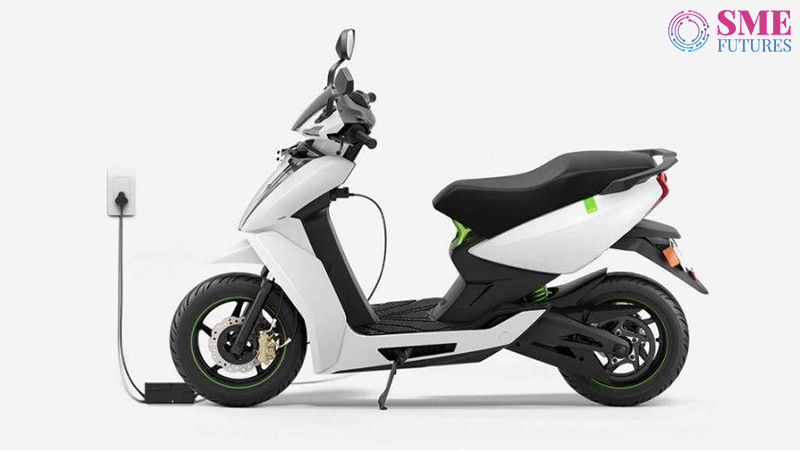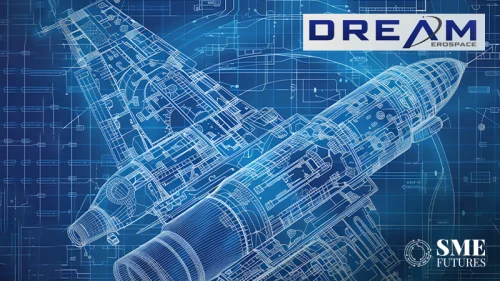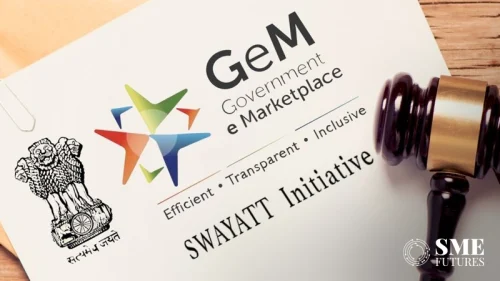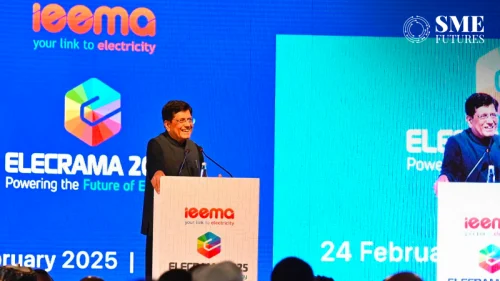Innovations in the arena of mobility could radically transform everything by 2030. Experts predict an entirely metamorphosed future with electric mobility. The challenges such as traffic congestion, road accidents, car-related safety issues, and pollution emission caused by mobility vehicles prevalent in market today can be addressed easily by electric mobility.
“We believe electrified, shared autonomous vehicles (AVs)—also called robo-taxis or shuttles—could address these pain points while revolutionizing urban mobility, making it more affordable, efficient, user friendly, environment friendly, and available to everyone,” states a Mckinsey insight of 2019.
Today, world is seeing a radical leap in adoption of electric mobility by users. Increased sales of electric vehicles (EVs) even when governments are cracking down on emissions are a testimony to it. Trends point out that electric two-wheelers and e-bikes have shunned obscurity and are rather growing in popularity.
The sales figures for small-format EVs were initially modest. According to a recent Mckinsey insight, the market for two-wheel EVs (E2Ws) and three-wheel EVs (E3Ws) was valued at around $97 billion, or 4 percent of global auto sales.
However, the sector has gained momentum now and global sales of E2Ws and E3Ws is increasing by more than 14 percent annually. This figure excludes sales in China, which was an early adopter of small-format EVs. Hence, it has shown a slow rate. According to estimates, the global sales of E2Ws and E3Ws could reach $150 billion by 2022.
India as the dominant market for micro-mobility vehicles
Till now, China has been the leader in the small-format EVs. It globally accounts for around 30 per cent of its market share. But this scenario may soon change, since the sale of micro- mobility vehicles has reached saturation in China. Some of the next emerging markets are Europe, Middle East, America, and South-East Asia.
India already sells largest number of electric three wheelers. So far, the country accounts for half of the entire number of electric rickshaws. As per an estimate, Indian roads will be full of 80 per cent electric three-wheelers by 2026.
On the other hand, the market of electric two wheelers or micro-mobility which mostly refers to light weight e-scooters is expected to grow more rapidly in our country. Even though the first half of FY 2021 was not best for the entire auto sector, there were registered sales of 7,552 units of high speed E2Ws from April to September 2020.
According to a survey conducted by Castrol, a lubricant major, consumers in India said they would consider purchasing an EV by 2022 on an average. (This also includes EVs other than two wheelers).
This is two years earlier than the global projection of 2024. However, two thirds (67 per cent) of consumers in India said that they are adopting a ‘wait and see’ approach. Over 40 per cent of fleet managers said they are waiting for competitors to make the switch before they do.
But Indian two wheelers and EV makers are already converging to popularize e-scooters in the country. In fact, the emergence of number of fresh electric mobility startups depicts that Indian market has immense potential of becoming a strong platform for 2W and EV.
Startups such as Hyderabad based Atumobile and Bengaluru based Simple Energy are few among many new players in this arena. Meanwhile, the rental commuting giant Ola has also ventured into EV manufacturing after acquiring Amsterdam based Etergo BV. With the launch of wide range of e-scooters in coming months, it has also announced world’s largest scooter manufacturing facility in Tamil Nadu.
Even if India is in the nascent stage of electric mobility, the enthusiasm in the market shows the positive sentiments, comments Ashutosh Verma, Founder of Delhi’s EV bikes and cycle maker Exalta. It is preparing to launch a hybrid electric model, a combo of e-scooty and e-cycle. “Micro-mobility has a very good scope in India as the consumers have now started preferring it, because it is easy to use and offers convenient combinations of electric traction and dock-less operation,” he tells.
“There is a great opportunity to develop good products in the segment of micro-mobility too!” says Suhas Rajkumar, Founder of Simple Energy, Bangalore based EV startup.
“Electric vehicles are the right solution for micro-mobility. They are green, easy to take care of, and have much lower running costs. The speed at which it is evolving will help in pushing the adoption of EVs which further will reduce the carbon footprint,” adds Rajkumar.
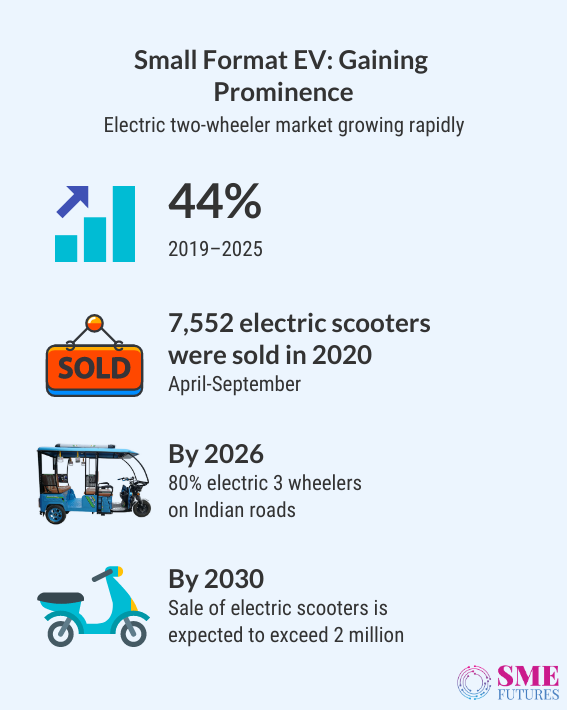
Companies expecting a phenomenal year for EVs
With the pace at which market is witnessing new two-wheeler launches, it is expected to grow at the rate of over 44 per cent for the forecast of 2019-2025. For example, Exalta plans to focus on hybrid vehicles for 2021.
Speaking more about his new products, Verma elaborates, “In the upcoming year, we are focusing that all products we plan to launch would be hybrid models. These will be more like a combination of e-scooty and e-cycle. We are working with a new carbon-fiber material, which is an asset for us, and we plan to use it in our future products.”
Nishchal Chaudhary, Co-founder and CEO of Jaipur based mobility start-up, BattRE also believes the current scenario is favourable for EV makers. He confesses, “At this moment, there aren’t any severe challenges for manufacturers.” Chaudhary feels that the number of electric vehicles in India is on a constant rise and hence more charging stations are being introduced.
Joining the bandwagon, BattRE is preparing to launch a 100 per cent Made in India product. Opening up more on this Chaudhary says, “We are working on our greatest launch till now which will be an electric bike. It is going to be India’s first 100 per cent made in India electric bike and we plan to release it by April-May 2021.”
Currently the EV maker is concentrated in South and West India. It now wishes to acquire the larger market share of E2W and is looking to generate PAN India distribution. “We already have 100 dealers, concentrated in South and West. By end of next year, we want to reach 250 dealer points covering majority of states in India,” he adds.
India has already been known as two-wheeler mobility nation. But electric bikes and scooters were not in limelight until recently as compared to electric cars. This has changed steadily feel new EV makers.
With the current state of public transport system, micro-mobility has the potential to address transportation needs of India’s burgeoning population.
Vamsi Gaddam, Founder of EV startup Atumobile tells, “It also has the potential to de-congest traffic and make transportation more efficient by providing real solutions for first and last mile connectivity.”
The startup launched Atum1.0 amid pandemic and has been experiencing a good response across India. The vehicle costs Rs 50,000 and is the café-racer styled electric bike which is specifically designed for needs of the upwardly mobile Indian consumer.
Encouraged with 250 pre-bookings to be delivered in January 2021, Vamsi Gaddam elaborates, “Our proprietary product is powered by a portable lithium-ion battery pack of 6 kgs that charges in just under 4 hours and offers a range of 100 kmph in a single charge. The bike comes with a 2-year battery warranty and is perfect for kids and adults for the city commuting.”
Similarly, Simple Energy is also planning to launch first e-scooter in 2021. “We are also looking at setting up a manufacturing unit and deliver the first batch of our EV in the next year,” informs Rajkumar.
Electrification of driving vehicles
Driving a movement in India takes considerable efforts and time. Government of India has been pushing electric mobility since 2013 with an aim electric mobility for all by 2032. Hence, we can say that electrification is being driven majorly by the regulatory push. But lately indigenous and eco-friendly features are also attracting consumers.
Environment friendly regulations and incentives
Most experts give credit to environment-friendly government incentives on battery-powered vehicles in shaping up an EV market in the country. Indian government has initiated regulations favouring electric vehicles since they reduce 65 to 70 per cent carbon footprint, compared with vehicles containing internal-combustion-engine (ICE).
Government has been pushing EV sales through different programmes. In 2013, it launched National Electric Mobility Mission Plan 2020 to enhance the EV adoption and manufacturing. Another noteworthy scheme is Faster Adoption and Manufacturing of (Hybrid and Electric Vehicles in India (FAME India). Its first phase started in 2015 which ended on 31st March 2019. This made way for second phase of the scheme—FAME-II.
With a budgetary support of Rs 10,000 crore, the focus of scheme in its phase II is on electrification of public and shared transport. Along with e-buses, E3Ws, E4Ws passenger vehicles, privately owned E2Ws will also be covered under the scheme as a mass segment. According to the official data, about 2.8 lakh hybrid and electric vehicles were supported by way of demand incentive amounting to about Rs 359 crore in phase I.
Further, Department of Heavy Industries has sanctioned 425 electric and hybrid buses for various cities in the country with a total cost of about 300 crores. To build a supporting infrastructure around it, about 500 charging stations of worth Rs 43 Crore were also sanctioned in cities like Bangalore, Chandigarh, Jaipur and NCR of Delhi.
Advocating the government efforts Gaddam of Atumobile says, “Apart from various subsidies, there is immense focus and work being done on establishing infrastructure for electric vehicles across various parts of the country. This only means that not only are there are several e-scooter or e-bikes available, but you also have a convenient charging point. Now-a-days, many housing complexes are also providing charging stations to their residents.”
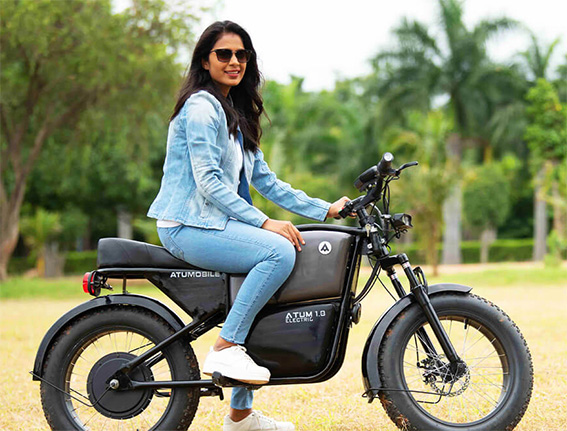
Better battery price and low-cost ownership
With the growth of the EV industry in India and with the emergence of both big and small players, the Indian EV industry is changing and so is its perception. Today, the Indian EV industry is slowly coming of age and this is being recognized by the Indian consumer. But still consumers inhibit buying electric vehicles over its exorbitant cost.
“Indian consumers are receptive to the concept of electric vehicle. We believe that they look at issues such as affordability and cost-cutting for fuel,” says Rajkumar of Simple Energy. “When companies solve these pain points, EV will become a widely accepted choice of the automobile as it reduces carbon footprints. Further with the zero usage of fuel, they are the greenest choice a consumer will ever make!” he asserts.
A battery constitutes 30 to 40 per cent of the total bill in an electric vehicle. A high-speed lithium-ion battery-powered scooter or motorcycle costs two times than a low-speed lead-acid battery strapped version. But that is changing gradually. Slashed GST rate from 12 to 5 per cent and delinking of battery costs of 2-3 wheelers from vehicle cost have boosted the electric vehicle demand in a big way.
Currently small format EV makers utilize lead acid batteries as they are cost effective and are easily procured as compared to lithium-ion batteries. However, the latter gives better range, speed, and charging. Hence, these are witnessing increase in demand but due to heavy cost they are expected to grow by volume. However, the lead-acid batteries will still lead the market share.
Although lead-acid batteries are expected to diminish from markets due to their low capacities and efficiencies, depths of discharge, and reduced low lifespans. The lithium-ion batteries are hence the future of electric transportation. The availability of subsidies and increasing efficiencies in lithium-ion battery technology is expected to increase its application.
These regulations have benefitted the EV sector in a way that ownership cost comes down. Mckinsey estimates that over next few years, prices are expected to drop by $90 to $130 per kilowatt-hour, from the current $220 to $280 per kilowatt-hour. This shift will stimulate more demand, especially among B2B buyers and members of the lower or middle B2C segments.
Elaborating economic benefits of electric mobility, Gaddam of Atumobile says, “Since the implementation of BS-6 engines, the cost of petrol run two-wheelers has gone up and the cost of electric scooters is now in an advantageous position. Secondly, overall cost of ownership of an EV is almost 10 per cent as compared to the petrol scooter.”
Emergence of new business models
A conventional vehicle and an electric vehicle are poles apart if we compare their internal structure. Although, electric mobility will dictate the future of mobility vehicles, but the usage of internal combustion engine is not going to fade away soon since it has existed for more than 100 years. With better pick-up, torque, and ease of driving, electric scooters will replace conventional scooters as a preferred choice of customers in a decade or so.
To boost both demand and sales, EV companies are coming up with new business models such as battery-as-a-service (BaaS). It could reduce up-front acquisition costs for E2Ws and E3Ws. Through this scheme, discharged Li-ion batteries can be swapped at swapping points. Meanwhile, the removable or detachable battery segment is growing fast.
Due to the challenge of charging infrastructure, removable batteries have emerged as a resilient solution in India. Removable batteries are more in demand than non-removable ones as they provide charging at home. They are expected to be a game-changer.
In addition to this, companies are coming up with services that persuade people to buy EVs with warranties and free services. One such service is the Roadside Assistance service by BattRE for its e-scooter consumers. “A lot of times people do not prefer buying e-scooter with minimal service options. Most auto-repair shops possess expertise in petrol scooters. Thus, we have introduced RSA service,” Chaudhary informs us.
Changing mindset of consumers
The behaviour of Indian consumers is ever-changing when it comes to their buying habits. In the arena of EVs (e-scooters and e-bikes), early products were primarily Chinese. When components from China dried up during the early phase of pandemic, a lot of companies already moved to a ‘China Plus One’ strategy.
This not only resulted in procurement of components from other countries, but it also prompted Indian companies to manufacture their own components. But today, many things have changed along with the perception of consumers due to happenings in past few months and because of government campaigns such as Make in India and Atmanirbhar Bharat Abhiyan.
“Most Indian consumers have started favouring made in India products lately and tend to do their research about make of any vehicle they purchase. In this department, we are confident that any potential user will be satisfied knowing that our EVs are 100 per cent made in India,” says Gaddam.
He further tells that be it an Indian product or an imported one, the Indian consumer will look for a quality product. He or she will also seek an easy infrastructure for it which makes it convenient to own an electric vehicle.
How pandemic fuelled growth of the segment?
The most visible impact of COVID-19 was on the automotive sector. Most of the operations related to OEMs, suppliers, and dealers came to a standstill during this phase. On the positive note, micro-mobility gained momentum in this period due to several reasons.
Verma of Exalta tells, “Due to Covid-19, businesses were adversely affected, and our industry was also a part of it. The sales were down for a while because of which market hold is not so strong as compared to the last year. Due to innovations and the Atmanirbhar campaign, there was a considerable rise in sales though it is less as compared to the last year.”
Exalta has been witnessing a shift towards e-cycles among consumers. Verma feels that e-scooters segment is rising gradually and will grow in upcoming years because of benefits it extends. These may or may not be directly related to COVID-19.
The sales from April to September when compared to previous financial year receded by 25.7 per cent but as soon as unlock started a quick recovery was registered. According to SMEV, sustainable goals couple with demand for personal transportation is fuelling this sale. In 2019, the E2W units sold were 10,161.
Experts of industry believe that apprehensive of shared commuting people have preferred personal vehicles during pandemic. According to Gaddam, micro-mobility has gained traction after lockdown due to an increased focus on personal health. He says, “I believe micro-mobility will drive the country as social distancing becomes a norm and as more commuters prefer solo commuting.”
EV makers are positive that this will further increase the demand for e-scooters. “Amidst the pandemic, the consumers are more likely to be inclined towards using their vehicles to commute. Furthermore, the new normal and fear of the second wave requires maximum hygiene and social distancing. This will surely give a push to the EV segment,” says Rajkumar of Simple Energy.
Infrastructure of electric vehicles as a hurdle
The emergence of multiple players in the manufacturing landscape of electric vehicles has made it competitive. But the inadequate infrastructure remains an obstacle. This is mostly in the form of fewer manufacturing hubs and facilities.
Verma tells us that core components of an EV are the front-end design, internal chassis, controller or battery, and hub motors. “India lacks proper infrastructure to manufacture hub motors. We also lack proper infrastructure for front-end designs. This issue won’t be resolved until big players completely stop the manufacturing of IC engine-based vehicle,” he adds.
He confesses that charging infrastructure is a challenge, but it is primarily for a smaller segment which is of four wheelers. For two wheelers, replaceable batteries and BaaS models are working fine. Until recently, electric bikes and scooters have also garnered less attention as compared to electric four wheelers and public transport. But this trend is also changing.
According to Rajkumar, the current cost of battery and power electronics constitute most of the cost of an EV. Thus, government’s support is required in sourcing right vendors to develop its spare parts. He emphasizes, “Localization push will help in lowering costs of EVs the way it does in the case of IC engine cars. Only the right push from government can counter these issues.”
Verma then discusses obstacles faced by manufacturers in detail. He further points that the road map for Aatmanirbhar Bharat is still not complete because of changes in customs duties because of which prices have been affected.
He explains, “We were dependent on China for various products, making a quick shift from there is not an easy task. The local vendors here have been trying to gather things at local level in order to manage costs. Also, the cost of spare parts and other backend jobs is too high. The only way to address these constraints is to completely stop the manufacturing of IC engine-based vehicle so that people make a shift towards e-scooters.”
Attaining the second inflection point
According to Senior Partner, Asutosh Padhi at Mckinsey & company, we have reached at the second inflection point of mobility. He opines, “Technological developments are happening pertaining to autonomous vehicles where we are witnessing driver less cars. There are massive breakthroughs in electrification. Along with this, there is huge surge in ride sharing. This is fundamentally shifting the notion of car ownership across the world.”
Due to this reason, Indian automakers and startups are betting hugely on the EV segment. This highly competitive market thereby is pushing EV makers to focus on developing innovative products and increasing their product portfolio by making high investments on R&D. Electric micro-mobility can hence provide affordable and environmentally friendly transportation alternative for the first time.

